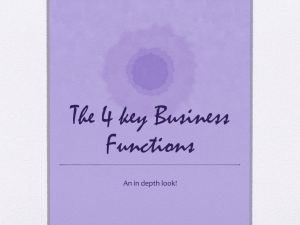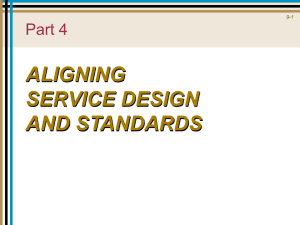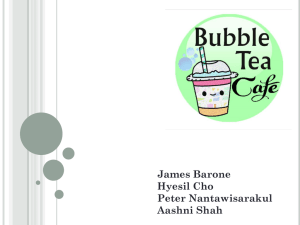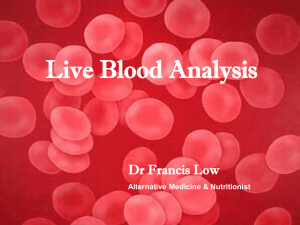Costs: Fixed, Variable and Sunk
advertisement
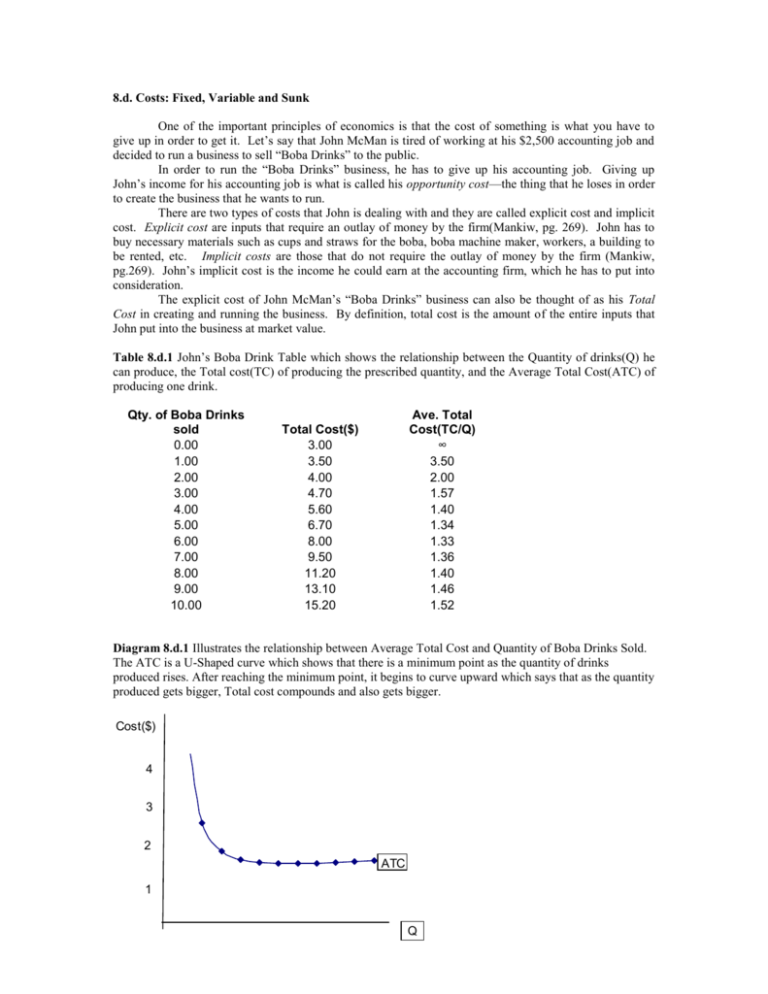
8.d. Costs: Fixed, Variable and Sunk One of the important principles of economics is that the cost of something is what you have to give up in order to get it. Let’s say that John McMan is tired of working at his $2,500 accounting job and decided to run a business to sell “Boba Drinks” to the public. In order to run the “Boba Drinks” business, he has to give up his accounting job. Giving up John’s income for his accounting job is what is called his opportunity cost—the thing that he loses in order to create the business that he wants to run. There are two types of costs that John is dealing with and they are called explicit cost and implicit cost. Explicit cost are inputs that require an outlay of money by the firm(Mankiw, pg. 269). John has to buy necessary materials such as cups and straws for the boba, boba machine maker, workers, a building to be rented, etc. Implicit costs are those that do not require the outlay of money by the firm (Mankiw, pg.269). John’s implicit cost is the income he could earn at the accounting firm, which he has to put into consideration. The explicit cost of John McMan’s “Boba Drinks” business can also be thought of as his Total Cost in creating and running the business. By definition, total cost is the amount of the entire inputs that John put into the business at market value. Table 8.d.1 John’s Boba Drink Table which shows the relationship between the Quantity of drinks(Q) he can produce, the Total cost(TC) of producing the prescribed quantity, and the Average Total Cost(ATC) of producing one drink. Qty. of Boba Drinks sold 0.00 1.00 2.00 3.00 4.00 5.00 6.00 7.00 8.00 9.00 10.00 Ave. Total Cost(TC/Q) ∞ 3.50 2.00 1.57 1.40 1.34 1.33 1.36 1.40 1.46 1.52 Total Cost($) 3.00 3.50 4.00 4.70 5.60 6.70 8.00 9.50 11.20 13.10 15.20 Diagram 8.d.1 Illustrates the relationship between Average Total Cost and Quantity of Boba Drinks Sold. The ATC is a U-Shaped curve which shows that there is a minimum point as the quantity of drinks produced rises. After reaching the minimum point, it begins to curve upward which says that as the quantity produced gets bigger, Total cost compounds and also gets bigger. Cost($) 4 3 2 ATC 1 Q The business’ Total Cost can be divided into 2 different categories; Fixed Cost and Variable Cost. Fixed Cost Fixed costs do not depend on the quantity of the goods the firm is selling. They are incurred even though the business has not made any goods at all. In John McMan’s case, his fixed cost in the Boba Drinks business includes the rent of the building he is going to use to run the business, advertising expense, equipment expenses (i.e. blender, cups, utensils), and others. John may also hire workers needed to operate his business such as a cashier and a boba maker. This will be included in the business’ salary expense. Table 8.d.2 Boba Drinks’ Fixed Cost and Average Fixed Cost Qty. of Boba Drinks 0.00 1.00 2.00 3.00 4.00 5.00 6.00 7.00 8.00 9.00 10.00 Fixed Cost 3.00 3.00 3.00 3.00 3.00 3.00 3.00 3.00 3.00 3.00 3.00 Average Fixed Cost ∞ 3.00 1.50 1.00 0.75 0.60 0.50 0.43 0.38 0.33 0.30 Diagram 8.d.2 Illustrates the relationship between Average Fixed Cost (AVC) and Quantity(Q). As quantity produced gets bigger, Fixed cost curves downward because it is being distributed to higher quantity. 6 5 Cost $ 4 3 2 1 AFC 0 0 1 2 3 4 5 6 Q 7 8 9 10 11 12 Variable Costs Variable costs are costs that depend on the amount or quantity of the goods that are being produced. The costs included in this category are the supplies expense needed for the boba drinks (i.e. cups, straws, ingredients). The more she sells boba drinks, the higher the variable costs being used. In addition, the more popular and marketable the boba is to the public, the more help John needs to create more bobas. Therefore, he has to hire more workers which increases the salary expenses incurred. Table 8.d.3 Shown is the relationship between the Quantity(Q), Variable Cost(VC) incurred and Average Variable Costs(AVC). Qty. of Boba Drinks 0.00 1.00 2.00 3.00 4.00 5.00 6.00 7.00 8.00 9.00 10.00 Variable Cost 0.00 0.50 1.00 1.70 2.60 3.70 5.00 6.50 8.20 10.10 12.20 Ave. Variable Cost ∞ 0.50 0.50 0.57 0.65 0.74 0.83 0.93 1.03 1.12 1.22 Diagram 8.d.3 Illustrates the relationship between Quantity and Average Variable Cost. This shows that as Quantity of drinks being produced gets higher, Variable Cost also curves upward because one uses more supplies to make the drinks which ultimately raises the cost of production. This is the opposite of Average Fixed Cost. 2 C o s t $ AVC 1 0 0 5 10 Q Diagram 8.d.4 Illustrates ATC, AFC and AVC together in one graph. 4 3.5 C o s t $ 3 2.5 2 ATC 1.5 AVC 1 0.5 AFC 0 0 5 Q 10 Note that Average Total Cost equals the summation of Average Variable Cost and Average Fixed Cost. ATC = AVC + AFC In this case, it is easier to analyze relationships between the averages of the Total, Variable and Fixed Costs because they illustrate the Cost of a Boba drink at different levels of production. Sunk Cost Sunk costs are contracts and decisions that are already vouched and cannot be recovered anymore. Compare to opportunity costs where one has a decision of giving up something in order to attain another thing, one has to live with sunk cost because they are expenses that are permanent. For example, if John noticed that it is not worth it to continue the Boba Drinks in the winter because people do not want to buy cold drinks in icy weather, he may decide to shut down his business for the winter season and reopen in the summer. John’s fixed cost, which is the rent expense for the building can be considered a sunk cost because he signed a lease to continue on paying rent for the whole year. Sunk costs are ignored and are irrelevant to the businessman when making decisions regarding his business.
